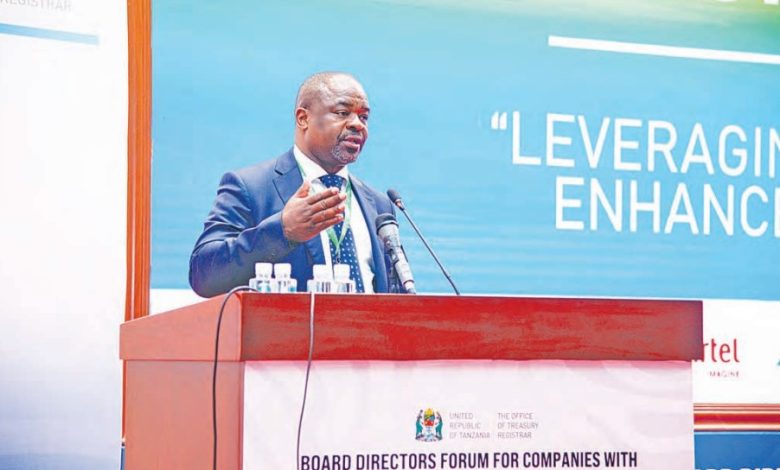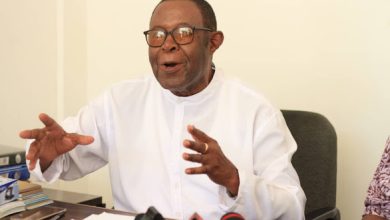TZ’s five-year evaluation of state enterprises puts revenue and accountability at the centre

DAR ES SALAAM: IN Tanzania’s ongoing pursuit of sustainable national development, public sector efficiency is emerging as a central pillar, not just for improving service delivery, but for strengthening the country’s financial independence through enhanced non-tax revenue.
Recognising the need to improve both efficiency and returns from public investments, the government has launched a sweeping five-year performance evaluation of stateowned enterprises (SOEs). The goal is to align institutional performance with tangible contributions to the national budget and public welfare.
Currently, non-tax revenue collected by the Office of the Treasury Registrar from Public and Statutory Corporations (PSCs) and minority interest corporations accounts for only three per cent of total domestic revenue far below the sector’s potential.
In August 2024, President Samia Suluhu Hassan made clear her ambition to change that trajectory, setting a target to increase non-tax revenue to 10 per cent of domestic collections within five years.
To support this ambition, the Office of the Treasury Registrar (OTR) is spearheading the evaluation to determine how effectively governmentbacked institutions are managing resources, delivering services and generating income for the nation.
At the heart of the effort is a desire to unlock the full potential of public enterprises not only as providers of essential services but also as strategic economic assets that contribute directly to government coffers through dividends and other forms of non-tax revenue.
On May 16, 2025, Ms Lightness Mauki, Director of Performance Management, Monitoring and Evaluation for Commercial Public Entities at the OTR, presented a comprehensive report to the Parliamentary Budget Committee in Dodoma.
The report focused on the status of non-tax revenue collection, outlined key challenges and highlighted the Office’s ongoing efforts to strengthen financial oversight and operational discipline within stateowned enterprises.
Her presentation formed part of a broader institutional push toward performancebased oversight where public enterprises are assessed not only by their profitability but also by their accountability, efficiency and contribution to national development through improved service delivery.
In that same context, Ms Mauki reaffirmed that the fiveyear performance evaluation of public institutions, launched by the OTR, is progressing steadily.
“In the first phase, the evaluation covers 30 institutions,” she told lawmakers.
“The remaining entities will be reviewed in the 2025/26 financial year.” A nation’s investment on trial At stake is a massive public investment.
The OTR currently supervises 308 institutions, of which 252 are majority-owned (more than 51 per cent government stake) and 56 are minority-held.
Collectively, these institutions represent a Sh 86.3 trillion investments Sh 83.43 trillion in majority-owned entities and Sh2.82 trillion in minority stakes.
With such substantial national resources tied up in these enterprises, the government is determined to ensure that each shilling invested translates into improved services and returns for Tanzanians.
ALSO READ: Reforming Tanzania’s public enterprises for a pro-business future
Whether it’s through dividends, loan repayments, or service fees, these enterprises are expected to deliver measurable value not just survive on state subsidies.
Ms Mauki emphasised that the audit is not about faultfinding, but rather about identifying gaps and unlocking untapped potential.
“The aim is to strengthen governance, enhance transparency and drive a results-based culture that serves the nation better,” she underscored.
Non-tax revenue: A quiet force in fiscal sustainability Non-tax revenue from public institutions is fast becoming a key player in national budget planning.
With domestic revenue collection often strained and donor aid declining, the government is strategically expanding its fiscal base by tapping into earnings from public enterprises.
For the current fiscal year (2024/25), the Treasury Registrar’s Office set a target to collect 1.113/- trillion from SOEs and joint ventures.
By the end of April 2025, the office had already collected 729.3/- billion, reaching 84 per cent of its target for the first 10 months (July 2024 to April 2025), which was 873.2/- billion.
“This year’s performance has been promising. We are on track to meet the annual collection goal,” Ms Mauki noted.
The revenue comes from several key sources: Dividends from profit-making entities These are governed under the Companies Act (Cap 212) and the Public Corporations Act (Cap 257), requiring profitable state-owned businesses to remit a share of profits to the government.
15 pc gross revenue contributions Collected under the Public Finance Act (Cap 348) and the Treasury Registrar’s Mandate Act (Cap 370), these contributions are required from institutions regardless of whether they post profits, ensuring a minimum financial return to the state.
Loan repayments and interest As stipulated by Section 51(5) of the Public Corporations Act, enterprises that received government loans must repay them with interest.
These payments are directed to the Consolidated Fund, reinforcing fiscal stability.
Telecommunication traffic monitoring system (TTMS) revenue This stream is derived from international telecommunications traffic monitored through TTMS, a regulatory infrastructure governed by Government Notice No 599 of 2021.
The resulting revenue is shared between the government and telecom service providers, adding a modern digital dimension to public income.
Surplus income and miscellaneous revenue Under Section 10A (2) of the Treasury Registrar’s Act and Section 42 of the Budget Act (Cap 439), public institutions are obligated to remit 70 per cent of any year-end surplus to the government.
This ensures that any extra earnings, even those outside initial budget projections, are reinvested in national priorities.
These non-tax revenue streams not only ease pressure on domestic taxpayers but also demonstrate how wellmanaged public assets can fund national priorities from infrastructure and healthcare to education and digital transformation.
Efficiency for service, not just profit While financial performance is a core focus, the government is also prioritising service delivery especially in sectors such as energy, transport, water, communications and agriculture, where state enterprises often play monopolistic or essential roles.
The performance review evaluates service delivery outcomes alongside financial metrics.
Are institutions providing reliable electricity? Is water reaching underserved communities? Are national airlines and railways operating on time and efficiently? These questions underpin the broader vision: public enterprises should serve the people, not just balance spreadsheets.
By embedding service delivery into performance metrics, the OTR is embracing a citizen-centric model of accountability, where institutions are judged by both what they earn and how well they serve.
A long road, but a clear direction As Tanzania moves forward with the second phase of the review in the 2025/26 fiscal year, involving the remaining institutions, expectations are high.
The government’s longterm goal is to establish a robust, performance-driven culture across all public enterprises one that supports the national development agenda without creating fiscal drag.
Will this initiative lead to restructuring, privatisation, or even mergers of underperforming entities? Possibly.
But whatever the path, the message is clear: public ownership must come with public responsibility.
For a nation striving to maximise every shilling, build resilient institutions and improve service delivery, the audit is not just about performance it’s about purpose.





